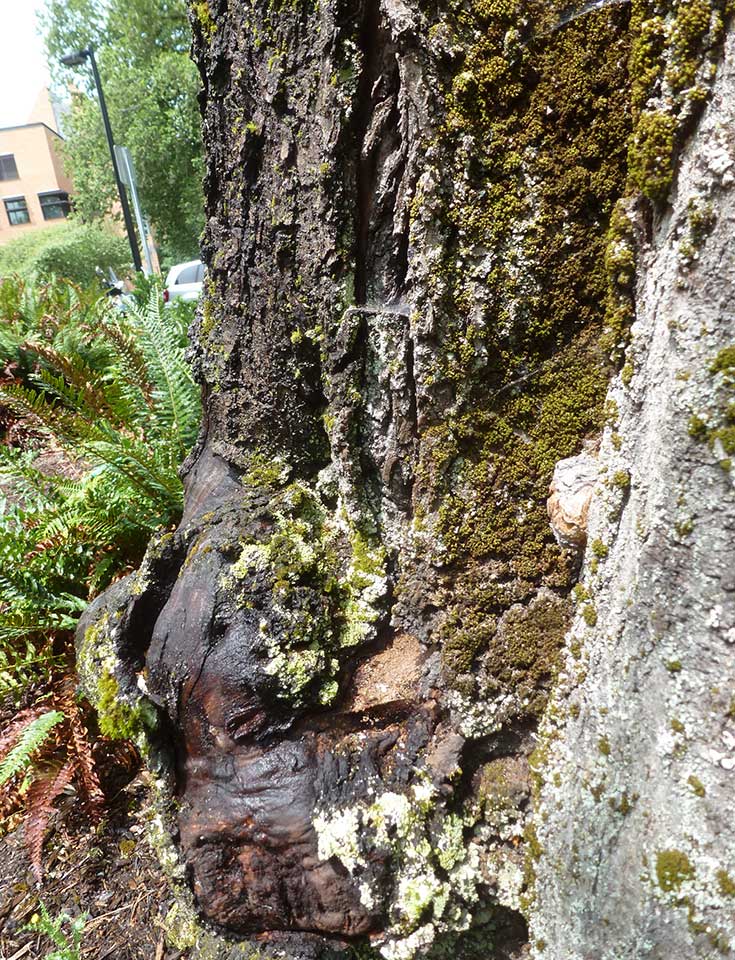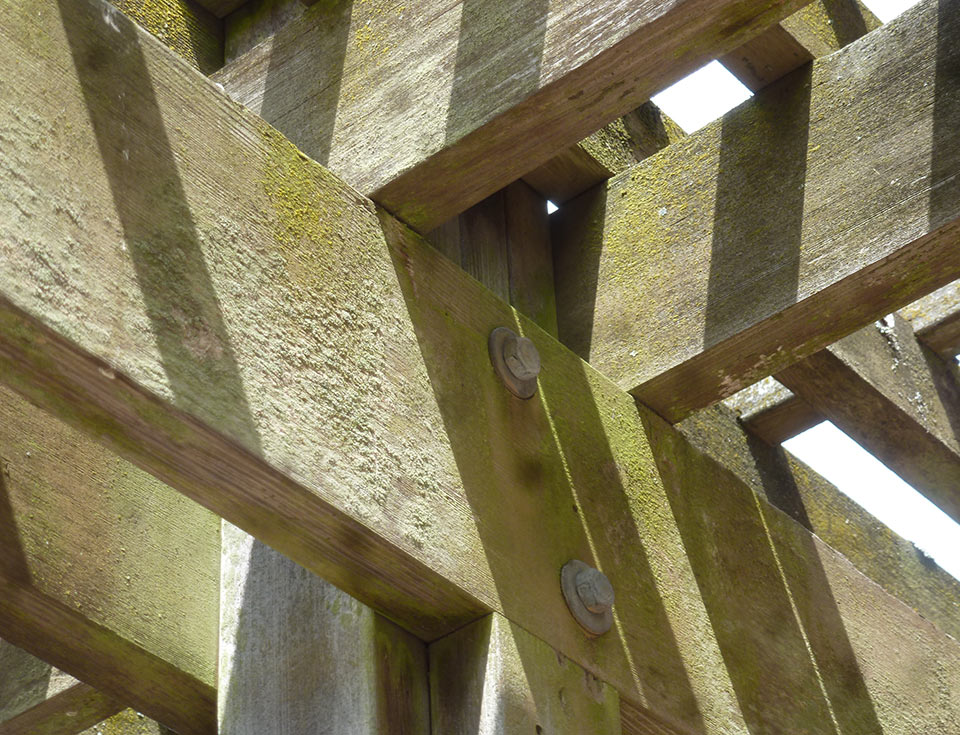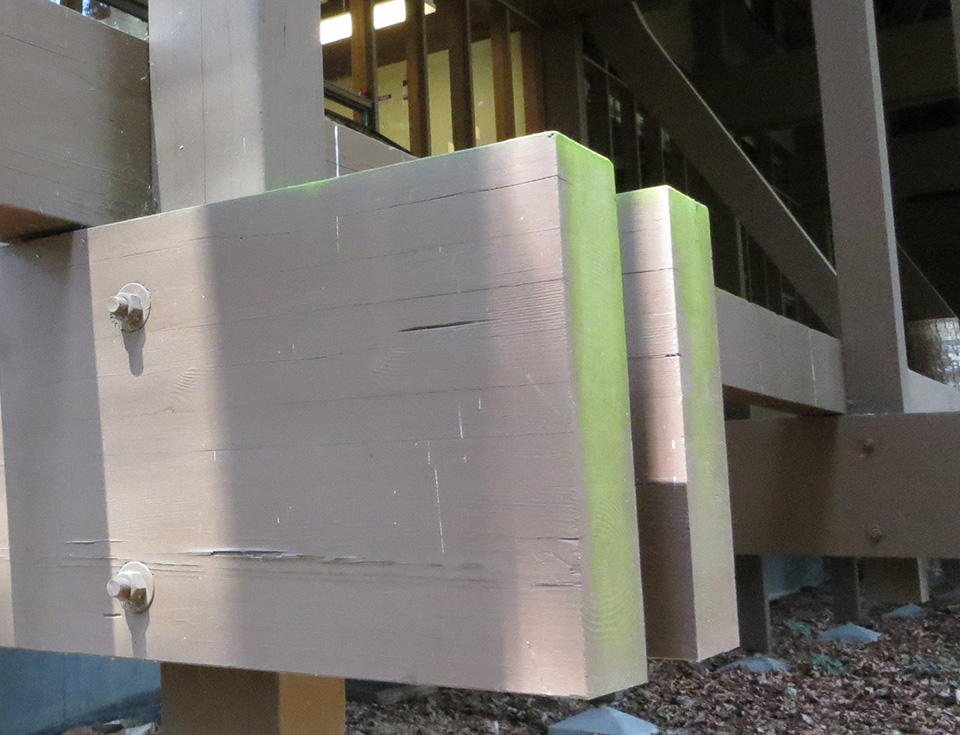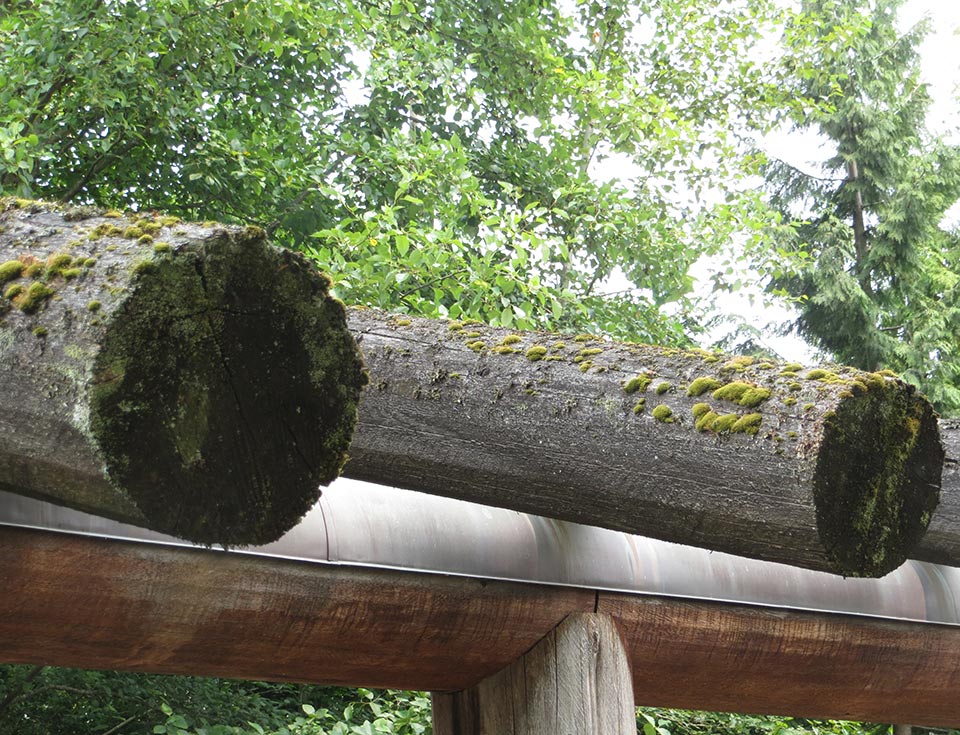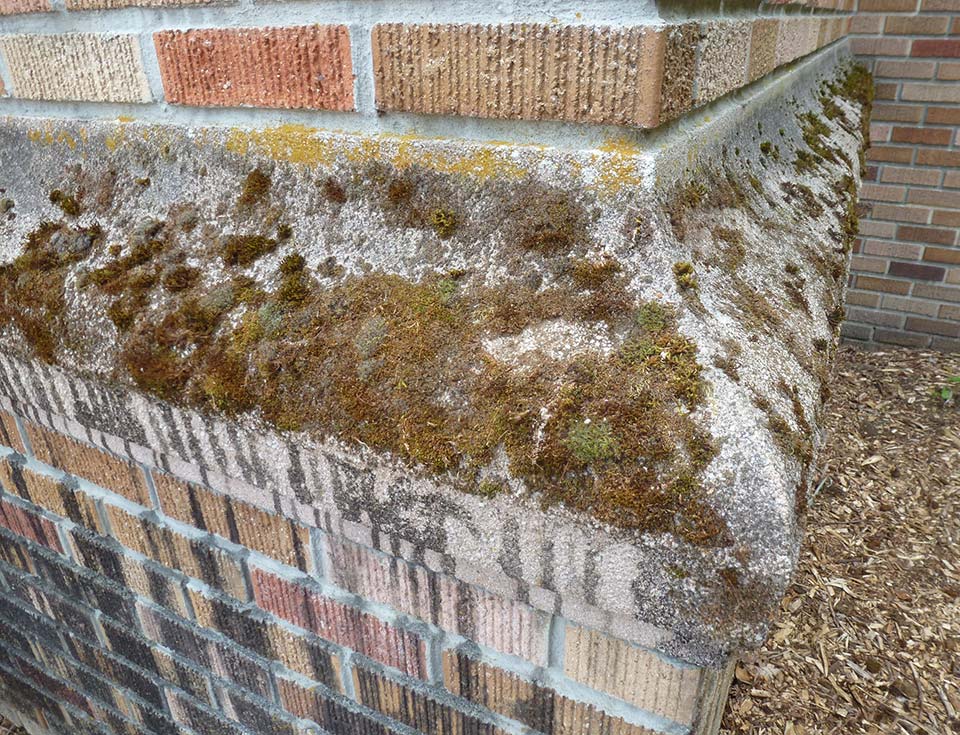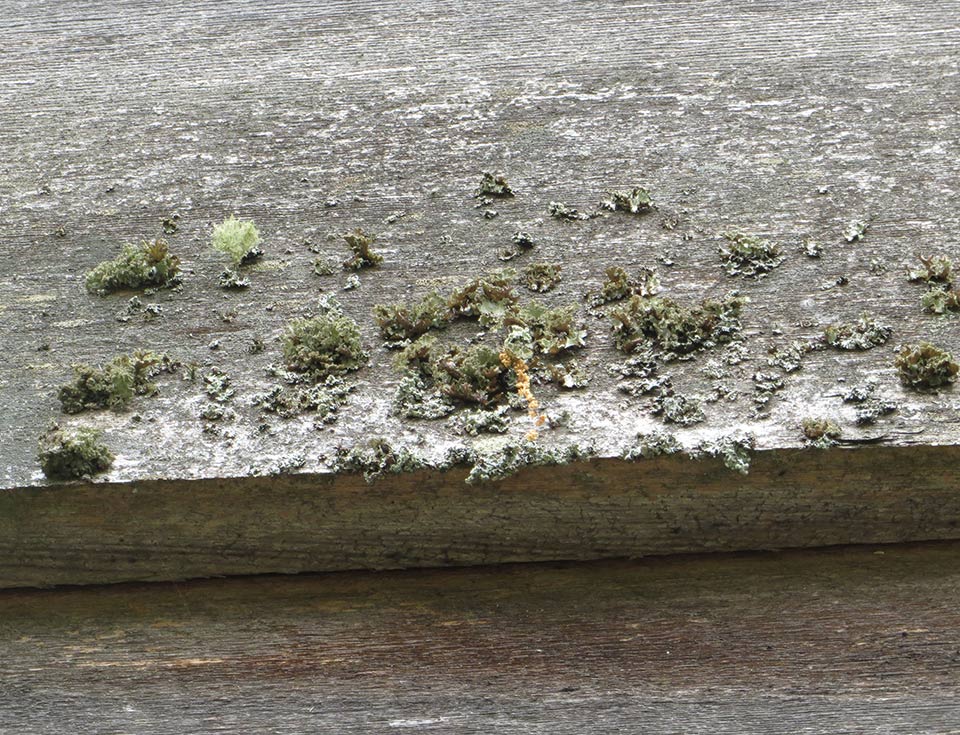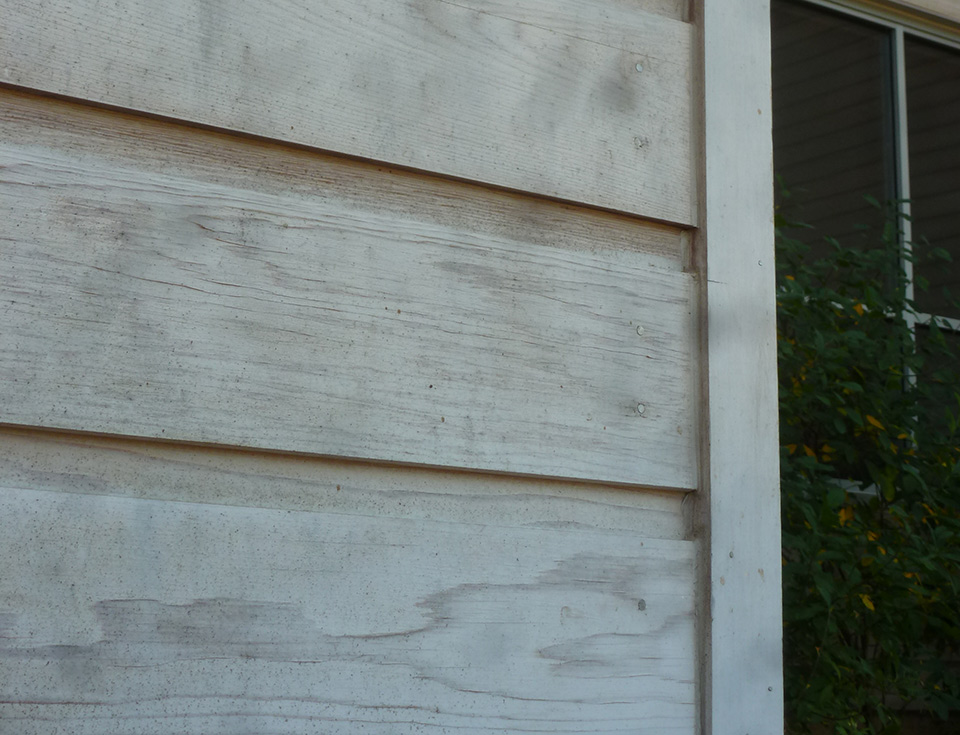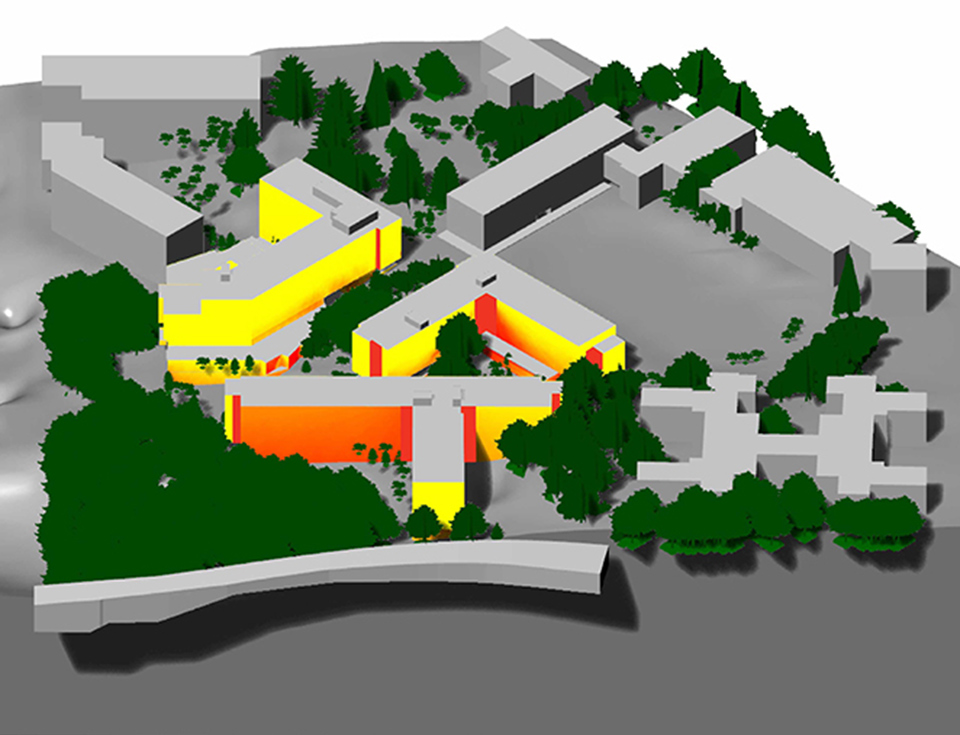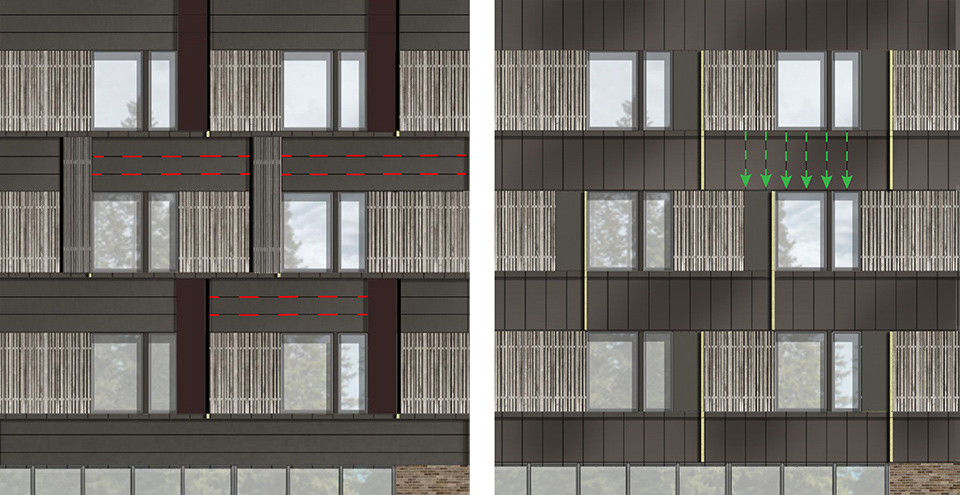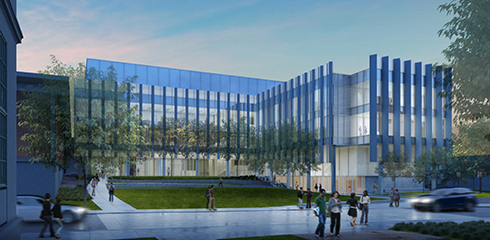University of Washington: A Bio-Growth Case Study
Nicknamed the "Moss Belt," the Pacific Northwest's climate means that bio-growth is ubiquitous.
When working in a new climate, researchers and designers at KieranTimberlake go to great lengths to investigate the design challenges inherent to the environment. During an early design meeting for the North Campus Housing project at the University of Washington, KieranTimberlake's team observed a campus landscape brimming with moss, algae, and lichen. These types of biological growth (“bio-growth”) are ubiquitous in the Pacific Northwest, clinging to windowsills, carpeting sidewalks, and decorating buildings. Located in a temperate rainforest climate zone with plentiful rain and cloud cover, the University of Washington's campus presented a unique set of challenges for the design team.
Asking new questions, abandoning assumptions, and pursuing climate-sensitive design solutions is central to KieranTimberlake's practice. Following this research-based design process, the team considered how they might investigate the range of bio-growth on campus and its relationship to existing campus buildings. Starting with the basics, researchers studied the types of bio-growth typically found in this region. Their research questions explored different species of growth, assessed impacts on building materials, and considered consequences for human health. The team drew upon local knowledge, regional design precedents, and researched patterns of bio-growth in order to understand where and how bio-growth occurs.
Researchers focused on four main types of growth: moss, mold, algae, and lichen. Moss, they discovered, can grow on virtually any material in Seattle's moist climate. It has the advantage of improving air quality by absorbing particulate matter from its environment. Mold, in contrast, prefers to grow on organic materials and has damaging effects such as metal corrosion and compromised wall assemblies that occur when moisture infiltrates the building envelope. Algae usually occurs in wetter environments than moss and often coincides with mold growth. Algae does not directly harm materials, but is difficult to remove. Lichen tolerate a great variety of environmental conditions and, like algae, are very difficult to remove. However, while lichen can corrode metal, they do not directly damage most materials.
Given that mold and algae can be detrimental to human health and damaging to materials, KieranTimberlake then worked to isolate the environmental variables that are related to these kinds of growth. They observed that bio-growth is densest in shaded, moist conditions such as internal corners or the underside of overhangs. They concluded that those two types of growth occur in similar microclimate conditions: low UV light exposure (shaded) and high humidity or moisture. Researchers determined that they could minimize bio-growth by maximizing a surface's exposure to air flow and sunlight.
The chance of bio-growth accumulation increases from yellow to red, as shown in the above model, which allowed designers to specify materials based on reducing the impact of specific microclimate factors.
Throughout the design process, the team worked to find ways of predicting and controlling growth patterns on the North Campus Housing project. The architectural team experimented with microclimate modeling in order to determine the parts of the building where specific types of bio-growth were most likely to occur. Using this method, architects were then able to request the use of metal in locations where growth is more likely, since metal has a lower tendency to accumulate bio-growth than other materials. The design has also focused on minimizing ponding and orienting building joints to prevent a buildup of moisture and organic matter. To this end, the rain screens on the building facade have been vertically oriented to ensure that spores are flushed during rainfall and moisture retention is decreased in the joint.
Horizontal joints, indicated by the red dashed line, allow organic matter to collect and facilitate bio-growth. In designing the facade details for the North Campus Housing project, architects employed vertical joints, indicated by the green line, to enable the spores to be flushed in order to prevent bio-growth accumulation.
In the coming months, KieranTimberlake will finish designing and detailing the new plan for the North Campus Housing project. The emphasis this project has placed on studying bio-growth on new buildings has permeated the firm's design process, illustrating the power of collaboration between designers and researchers in pursing lasting, climate-driven solutions that will inform final design decisions both at the University of Washington and beyond.



